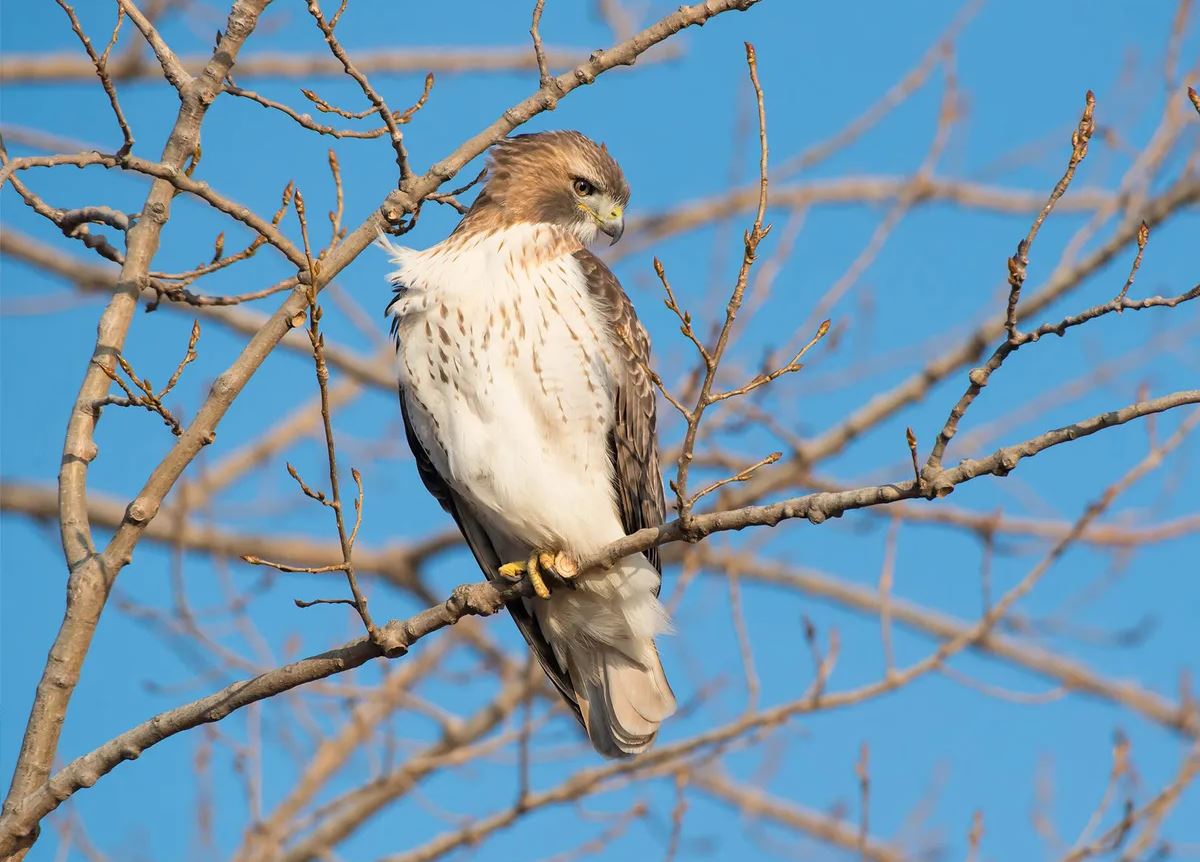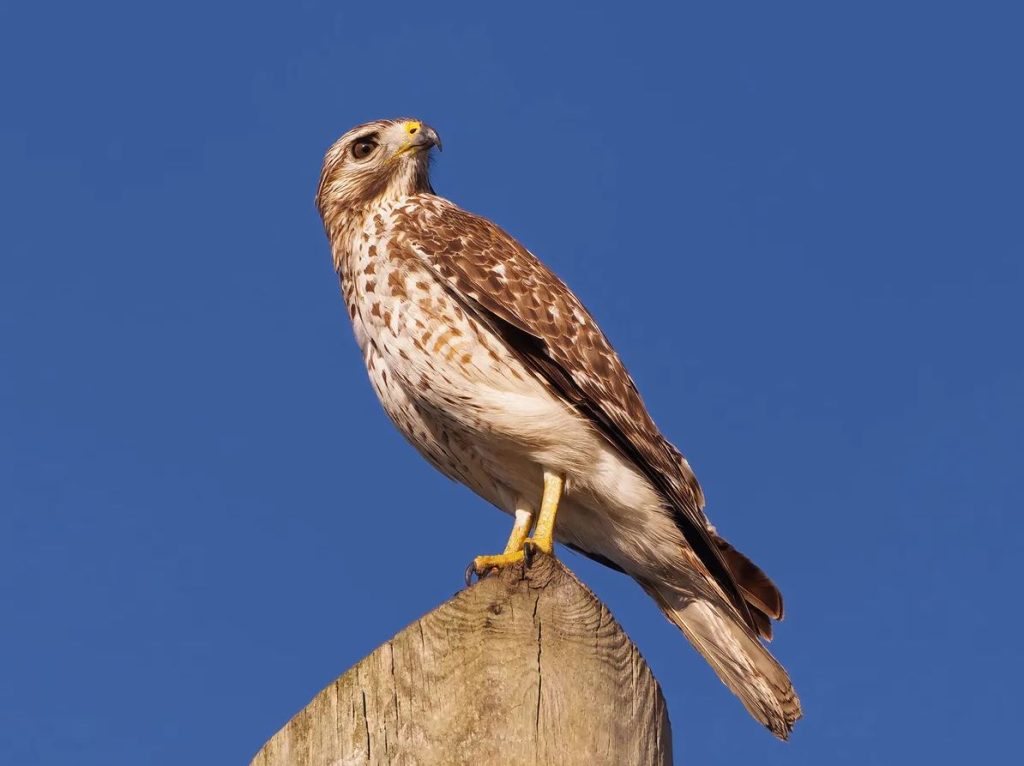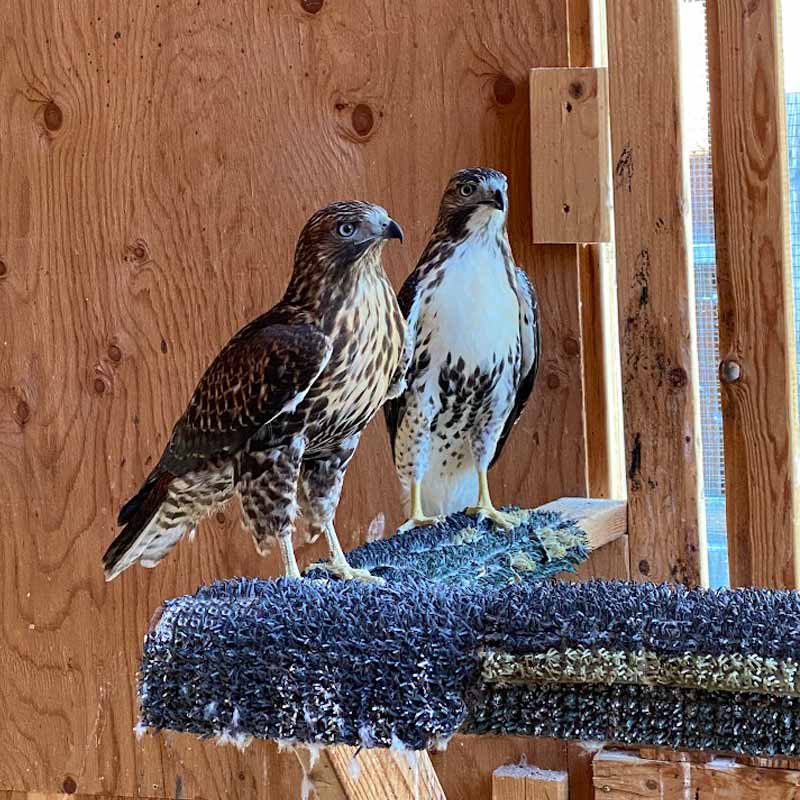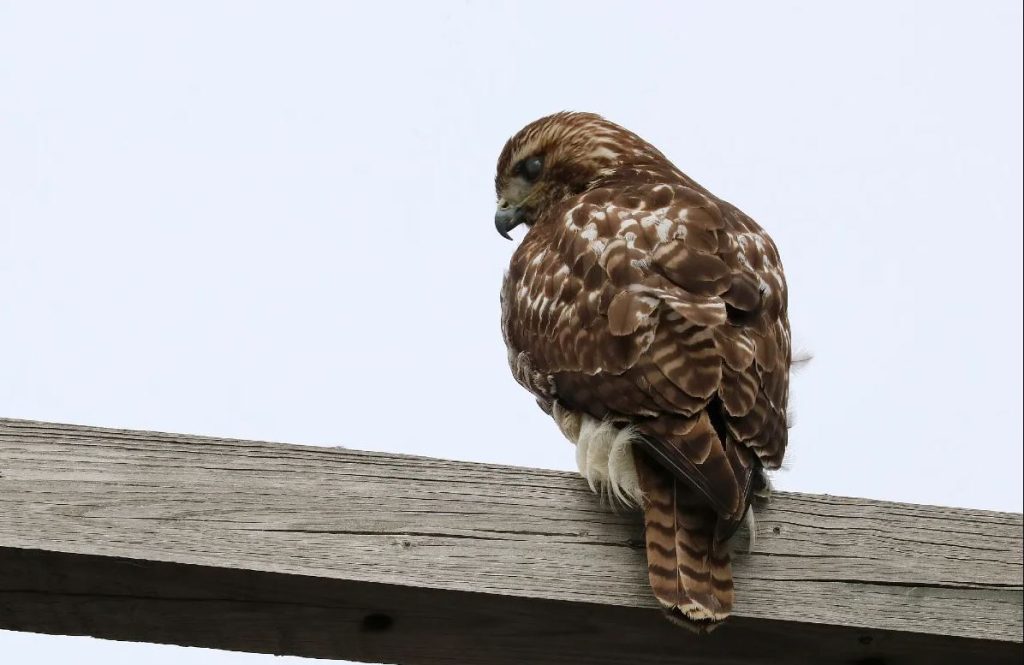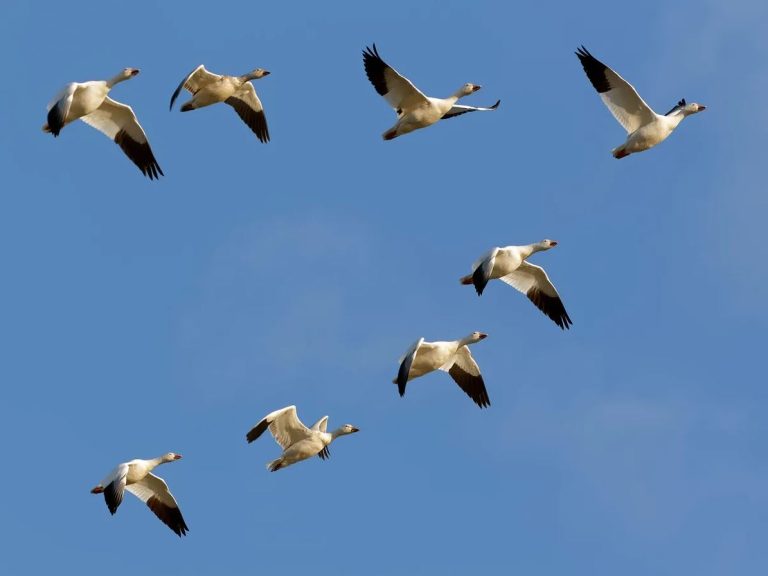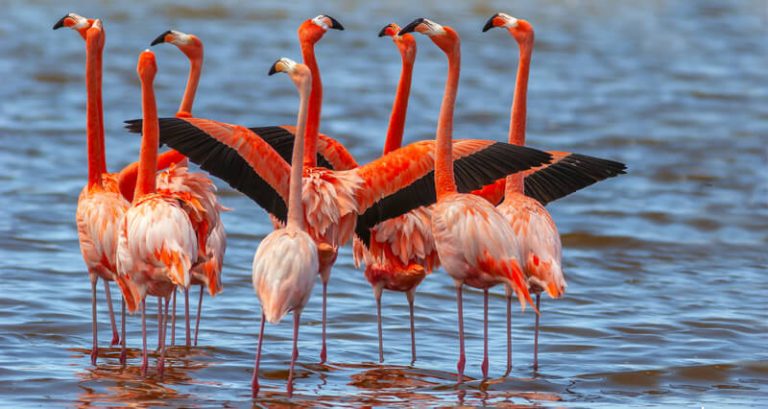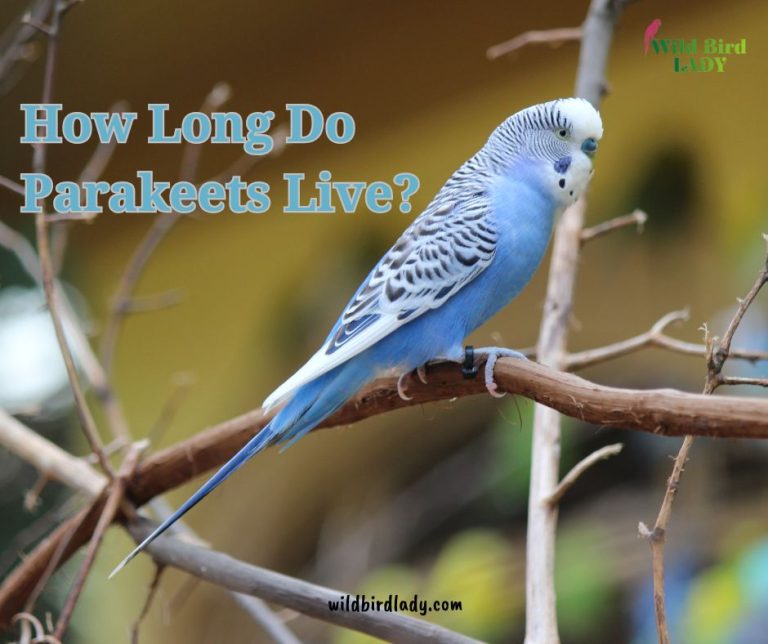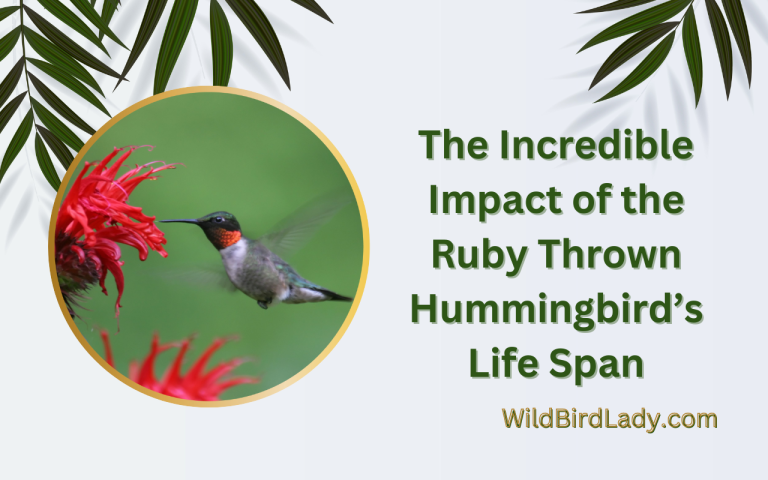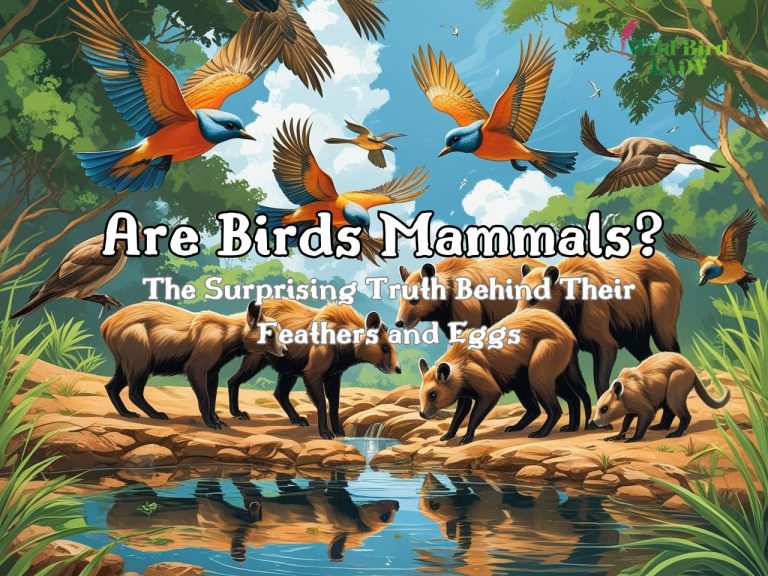Juvenile Red-Tailed Hawk: How to Identify This Young Raptor in the Wild
By Rifat Ahmed – Birdwatcher with 13 Years of Experience
Have you ever spotted a large brown bird soaring above an open field and wondered, “Is that a hawk?” If it didn’t have the telltale red tail, you might have dismissed it as something else entirely. But don’t be so quick! You might have just seen a Juvenile Red-Tailed Hawk—one of the most misunderstood young raptors in North America.
In this guide, I’ll share my firsthand experiences and field-tested tips on how to recognize a red-tailed hawk juvenile, even when it’s missing the bright tail you expect. I’ve been birdwatching for over 13 years, and spotting a young hawk in the wild remains one of my favorite challenges. Let’s dive into what makes these birds special and how you can confidently identify one in the field.
🦅 What Is a Juvenile Red-Tailed Hawk?
A Juvenile Red-Tailed Hawk is simply a young red-tailed hawk that has not yet reached adulthood—typically under a year old. Although they belong to the same species as adults (Buteo jamaicensis), they look, behave, and sound quite different during their first months of life.
Many beginner birders are surprised to learn that these juveniles do not yet have red tails. That’s because their signature rust-colored tail feathers develop only after their first molt, usually around their second year.
Quick Facts:
- Species: Buteo jamaicensis
- Age range: Hatchling to ~12 months
- Wingspan: 43–57 inches
- Habitat: Open fields, woodlands, deserts, urban edges
- Diet: Small mammals, reptiles, birds
Source: All About Birds – Red-tailed Hawk
What Do Juvenile Red-Tailed Hawks Look Like?
One of the most common birdwatching questions I hear is: “What do hawks look like—especially the young ones?” The answer can be tricky, but once you know what to look for, spotting a red-tailed hawk juvenile becomes second nature.
✅ Key Visual Traits of Juvenile Red-Tailed Hawks:
- Brown, Banded Tail (Not Red!)
Instead of a rich rusty-red tail like adults, juveniles have pale brown tails with several dark horizontal bars. This is the single most important ID clue. Don’t expect a red tail yet—it’s not there! - Streaked Chest and Belly Band
Juveniles have heavily streaked chests with a dark, sometimes messy belly band across the lower chest. This can vary in thickness but is always noticeable. - Pale, Wide Underside of Wings
In flight, look for the pale underwings with dark patagial marks (dark bars along the leading edge of the wings near the shoulder). This is a red-tail trademark, even for juveniles. - Yellowish Eyes
While adults have deep brown eyes, juvenile red-tailed hawks have pale yellow irises. Their eye color darkens with age. - Legs and Feet
Like adults, juveniles have powerful yellow legs and sharp talons, built for hunting from the get-go.
Side-by-Side Comparison: Juvenile vs Adult
| Feature | Juvenile Red-Tailed Hawk | Adult Red-Tailed Hawk |
|---|---|---|
| Tail | Pale brown with dark bars | Solid reddish-brown |
| Chest | Streaked with belly band | Light chest, cleaner belly |
| Eye Color | Yellow | Brown |
| Call | Higher-pitched scream | Lower, raspy scream |
| Behavior | Often more clumsy, experimental | Confident flyers and hunters |
Where to Find Juvenile Red-Tailed Hawks
These birds are widespread across North America. I’ve spotted young hawks soaring over highways in Texas, perched on fenceposts in the Midwest, and even nesting near my local park in upstate New York.
Preferred Habitats:
- Open Fields & Grasslands – Ideal for hunting small mammals
- Forest Edges – Provides perching and nesting areas
- Urban/Suburban Areas – Juveniles are surprisingly adaptable to city parks, golf courses, and highway medians
Juveniles often perch lower and hunt smaller prey than adults, making them more visible if you know where to look.
Behavior: How Juvenile Red-Tailed Hawks Act Differently
From my field notes over the years, I’ve observed some fascinating behavioral traits in red-tailed juvenile hawks:
1. Less Polished Flyers
Juveniles sometimes struggle with strong wind gusts or precise landings. You might see a young hawk flapping more than soaring or landing awkwardly on a branch.
2. Vocal Practice
They often cry out with a high-pitched, piercing scream—a bit different from the iconic adult call you hear in movies. These calls can be constant, especially when begging for food from nearby parents.
3. Clumsy Hunters
A juvenile may miss its target or spend extra time watching before making a move. Their inexperience is obvious compared to seasoned adults.
4. Sibling Interactions
In early summer, you might spot two or three young hawks together, especially if they’ve just fledged from the same nest. They’ll practice flying, hunting, and even mock-fighting.
How Long Does a Red-Tailed Hawk Stay Juvenile?
The juvenile stage of a red-tailed hawk lasts roughly 6 to 12 months, depending on environmental factors and individual development. During this time, the bird is essentially a teenager—physically capable of flight and hunting, but still refining its skills and lacking the signature red tail that defines its adult identity.
The transition out of the juvenile phase typically happens after the first full molt, which usually occurs in late spring or early summer—about a year after the bird hatches. That’s when the hawk begins replacing its brown, banded tail feathers with the deep, rust-red feathers of adulthood.
Let’s take a closer look at the life cycle timeline, which offers a clearer picture of how a red-tailed hawk grows from a fluffy nestling into a majestic adult.
Life Cycle Timeline of a Red-Tailed Hawk
- 0–2 Weeks: Nestling
At this stage, the chick is completely dependent on its parents. It remains in the nest, covered in soft down, and is fed regurgitated food by both the male and female hawks. - 2–6 Weeks: Feather Development and Growth
The chick rapidly grows flight feathers and begins to resemble a small hawk. Wing-flapping and hopping along the nest edge are common as it builds muscle for its first flight. - 6–10 Weeks: Fledging Period
Around 6 weeks old, the young hawk takes its first flight—an event known as fledging. However, fledglings don’t go far. They stay close to the nest area for several weeks while parents continue to feed and guide them. - 3–12 Months: Juvenile Phase
This is when the bird becomes a full-fledged juvenile red-tailed hawk. It begins hunting solo, exploring territories, and developing independence. Though it looks large and fierce, it lacks the signature red tail and displays the streaky chest and brown-banded tail of a juvenile. During this period, juveniles often experiment with prey and show less precision in flight. It’s not uncommon to watch them miss a target or awkwardly land on a perch—they’re still learning the ropes. - 1+ Year: First Molt and Adult Plumage
After roughly 12 months, juveniles undergo their first complete molt. This includes the replacement of wing and tail feathers. It’s at this point that the iconic red tail feathers begin to grow in, marking the transformation into an adult.
Seasonal Clue: What Time of Year Was It Born?
If you see a red-tailed hawk juvenile during fall or winter, chances are it hatched earlier that spring. This aligns with the typical breeding and hatching season for red-tails across North America, which usually begins in late March to early May.
By fall, these juveniles are fully fledged and flying independently, though still easy to spot due to their distinctive non-red tails and youthful behavior.
Summary: Key Milestones
| Age Range | Development Stage | Key Traits |
|---|---|---|
| 0–2 weeks | Nestling | Downy, eyes open, immobile |
| 2–6 weeks | Pre-fledging | Growing feathers, active in nest |
| 6–10 weeks | Fledgling | First flight, still reliant on parents |
| 3–12 months | Juvenile | Brown-banded tail, yellow eyes, learning to hunt |
| 1+ year | Adult | Red tail appears, confident hunter, brown eyes |
Understanding this timeline can help you better interpret what you’re seeing in the wild. Next time you spot a large, streaky hawk in the colder months, take a closer look—you just might be watching a young red-tailed hawk in the middle of its incredible transformation.
Identification Tips from the Field
Here are my go-to tips when I spot a hawk and need to determine if it’s a juvenile red-tail:
- Tail first. If it’s not red, check for horizontal bars—classic juvenile trait.
- Look for the belly band and streaky chest.
- Listen for the call. A whiny, sharp scream is often a young bird.
- Observe the behavior. Is it flying confidently or learning the ropes?
- Use binoculars to check the eye color. Pale yellow means juvenile.
Bonus tip: Carry a field guide or use the Merlin Bird ID app for quick confirmation.
Why It’s Important to Recognize Juvenile Red-Tailed Hawks
Understanding how to ID juvenile red-tailed hawks helps us:
- Monitor population health – More juveniles = strong breeding season
- Contribute to citizen science – Share sightings on eBird and iNaturalist
- Appreciate raptor development – Seeing the growth process is rewarding
- Avoid misidentification – Don’t confuse them with Cooper’s or Broad-winged Hawks
Expert Insight from Cornell Lab of Ornithology
The All About Birds guide from the Cornell Lab offers rich information on red-tailed hawks, including juvenile behavior and plumage. According to their profile:
“Juvenile red-tailed hawks have brown tails with narrow dark bars and are generally more streaked below than adults.”
— All About Birds – Red-tailed Hawk
This source is a goldmine for reliable, research-based bird information and helps boost our understanding as both hobbyists and conservationists.
Best Time to Spot Juvenile Red-Tailed Hawks
- Late Spring to Early Summer: Fresh fledglings testing their wings
- Late Summer: Young hawks becoming independent
- Fall Migration (Sep–Nov): Juveniles may migrate short distances or find new territories
- Winter: Still easy to spot in open areas, though plumage may start changing
They’re active during the day, so bring your binoculars between 9 AM and 3 PM for the best chance at a sighting.
Final Thoughts from Rifat Ahmed
Over the past 13 years of birdwatching, I’ve learned that identifying a young hawk takes patience, keen observation, and a bit of practice. But the reward? Seeing a juvenile red-tailed hawk soar for the first time or struggle to grab a mouse—it’s a powerful reminder of nature’s raw beauty and resilience.
Don’t get discouraged if you misidentify a few hawks early on. Trust me—I did too! But with time, these magnificent birds will become familiar friends in the sky.
FAQ: Juvenile Red-Tailed Hawk
❓ Do juvenile red-tailed hawks have red tails?
No. Juveniles have brown tails with dark bands. The red tail appears after their first molt.
❓ What do hawks look like when they’re young?
Young hawks often look streakier, have yellow eyes, and show less confidence in flight compared to adults.
❓ Can juvenile red-tails hunt on their own?
Yes, but they often fumble or miss prey while learning. Parents may continue feeding them for several weeks post-fledging.
❓ How do I know if a hawk is a juvenile?
Check the tail color, chest streaks, eye color, and flight behavior. Combine multiple clues for best accuracy.

